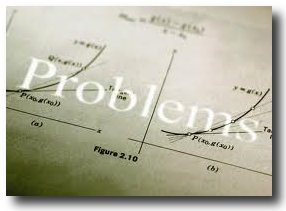 Richard Muller is taking flak from both sides, which I guess was inevitable when such a prominent figure enters the climate fray accompanied by a great deal of media attention. The latest set of potshots has come from Skeptical Science, which has posted a new article this morning looking at some of the things it says Muller got wrong in his widely reported lecture on "hide the decline".
Richard Muller is taking flak from both sides, which I guess was inevitable when such a prominent figure enters the climate fray accompanied by a great deal of media attention. The latest set of potshots has come from Skeptical Science, which has posted a new article this morning looking at some of the things it says Muller got wrong in his widely reported lecture on "hide the decline".
A couple of things interested me about the Skeptical Science article or, more precisely, its companion piece published at the end of last month. In this piece, I'm going to discuss the article's consideration of the divergence problem:
...the decline in tree-ring density is not a hidden phenomena - it's been openly discussed in the peer-reviewed literature since 1995 (Jacoby 1995) and was also discussed in the IPCC Third Assessment Report (TAR) and Fourth Assessment Report (AR4).
I think the characterisation of the discussion of the issue in the Third Assessment Report as "open" is not a reasonable one. Here is what the report had to say on the issue
There is evidence, for example, that high latitude tree-ring density variations have changed in their response to temperature in recent decades, associated with possible non-climatic factors (Briffa et al., 1998a). By contrast, Vaganov et al. (1999) have presented evidence that such changes may actually be climatic and result from the effects of increasing winter precipitation on the starting date of the growing season (see Section 2.7.2.2).
"Variation in response" hardly characterises the decline very well, does it? Would a reader of this section have understood that these tree rings were headed off in the opposite direction to that expected? Were the implications discussed? And there was no discussion of the truncation of the record in order to hide the change in response (i.e. the decline) either. I don't think Skeptical Science has got this right.
But there was also this:
it bears remembering that other research finds tree-ring density is reliable before 1960. Briffa 1998 finds that tree-ring width and density show close agreement with temperature back to 1880. The high-latitude tree-rings that show divergence after 1960 also match closely with other non-diverging proxies going back to the Medieval Warm Period (Cook 2004). This indicates the divergence problem is restricted to modern times.
Now this is a bit naughty. Cook did indeed suggest that the divergence was restricted to modern times, a paper that reasonable people can probably agree is not a firm basis for disposing of such an important question. But even the Fourth Assessment report quoted D'Arrigo et al saying that the divergence problem might be a manifestation of a non-linear response to temperature, something that would undermine the whole of the tree-ring approach to paleoclimate. And a still more recent paper describes the evidence restricting the problem to the twentieth century as "limited". For Skeptical Science to pretend otherwise seems to me to be...a problem.